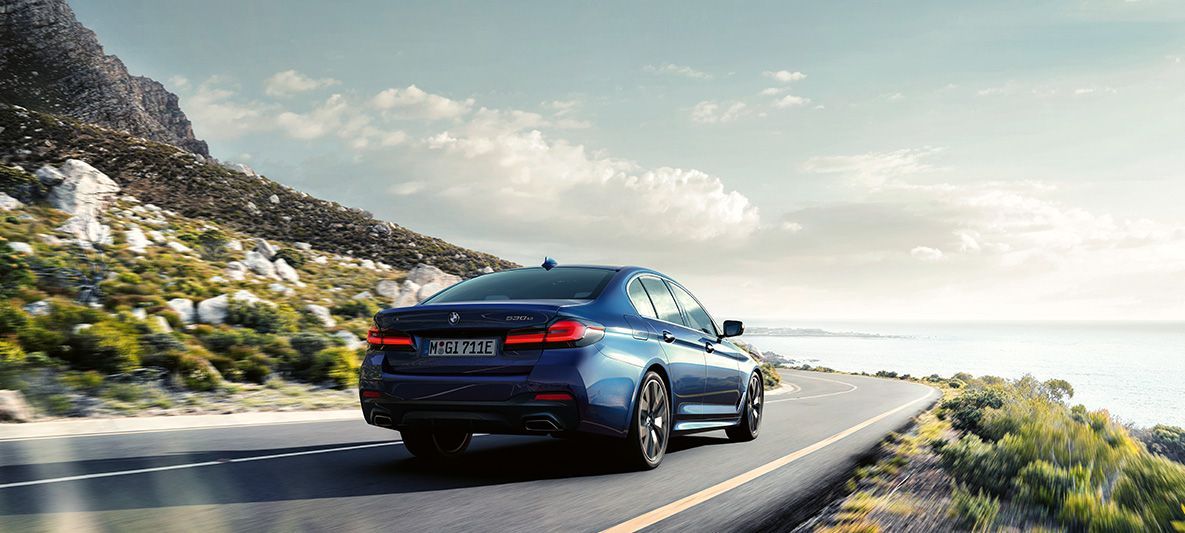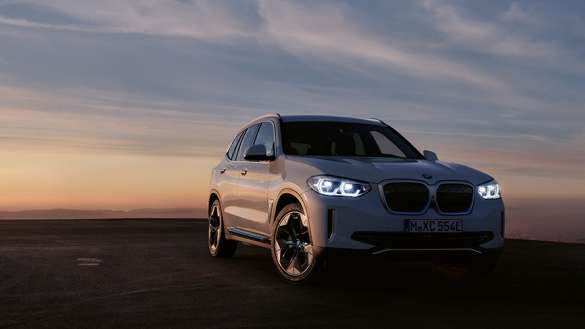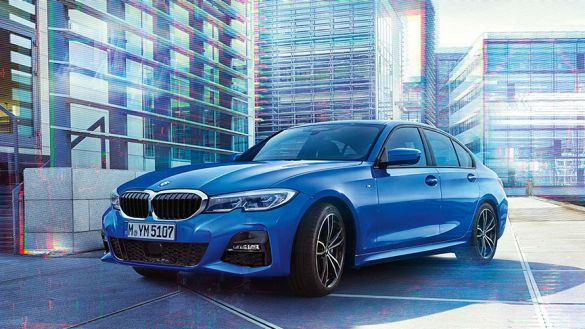Uncompromising Range Comfort.
Explore everything about the range of BMW electric cars and plug-in hybrids.
Freedom means unlimited mobility. Increasingly powerful, high-voltage batteries now make electric vehicles more than suitable as daily drivers for any lifestyle. Discover the world of comfortable electric driving with BMW electric and plug-in hybrid vehicles.

ON THE MOVE WITH YOUR BMW ELECTRIC CAR AND PLUG-IN HYBRID.
Experience travelling completely new with BMW: electrified and as comfortable and easy as it can possibly be! You can now set off on your well-deserved holiday or the daily commute to work free of local emissions and with electric ranges fit for everyday use. In this way you contribute to making the present and future cleaner and more liveable. We will give you two examples of electrified and comfortable travelling with BMW.

ON HOLIDAY WITH YOUR BMW ELECTRIC CAR!
Experience a trip on holiday with the all-electric BMW iX3.
You’ve chosen your holiday destination, the suitcases are packed and your BMW iX3 with its purely electric range of up to 460 km is standing in your driveway ready for action. In order to get the optimum out of your electric car from the outset, you have already prepared the interior and the battery for the journey using the My BMW App or the settings in the vehicle menu. Thanks to the process known as “preconditioning”, your domestic mains electricity is used to adjust the temperature of the interior and battery while the vehicle is still charging from your BMW Wallbox. As a result, your electric car is ideally prepared, and you can take advantage of the full range. With the baggage stowed in the luggage compartment with its more than 500-litre capacity, it’s now time to set off – almost in silence, you can savour the journey with all the comforts your vehicle has to offer. Very simple measures even allow the range to be increased during the journey. The route ahead assistant and the BMW Intelligent Personal Assistant help you to do so. “Hey BMW. How can I increase my range?” Alongside external environmental factors such as the outside temperature, your personal driving style also affects the efficiency of the high-voltage battery in your vehicle and hence your available range. A generally anticipatory and uniform driving style allows you to extract the maximum from your battery. Reducing your speed on certain stretches of road can therefore bring about a noticeable increase in electric range. Once arrived at your charging stop, you unlock and charge your BMW iX3 easily and conveniently. You can now continue to your destination, completely free of exhaust fumes and local emissions. Here’s to a well-deserved holiday in the green and pleasant countryside – and to the anticipation of a similarly green and relaxing return journey with your BMW iX3!
I'd like to explore the BMW electric cars
COMMUTING WITH YOUR BMW PLUG-IN HYBRID!
Experience the daily commute to your workplace with your BMW 3 Series Plug-In hybrid Sedan 330e.
There are many ways to get your place of work in the morning. However, few of them make it possible with no local emissions, particularly when the journey is longer than 20 km. A BMW plug-in hybrid masters this challenge with ease – one example is the BMW 3 Series Sedan 330e with a purely electric range of up to 60 km. On the previous evening, you connected your plug-in hybrid with the BMW Wallbox to charge up and set the precise time at which it should be preheated and fully charged for the next day and hence ready to set off. Thanks to the process known as “preconditioning”, your domestic mains electricity is used to adjust the temperature of the interior and the battery while the vehicle is still charging from your BMW Wallbox. This means your vehicle is ideally prepared for the journey, and you have its full range at your disposal. Incidentally, this is why daily charging is recommended. While you are at work, you can conveniently find a public charging station or use the standard charging cable supplied with your vehicle. From time to time, you can check the charging and vehicle status of your plug-in hybrid at any time via the Change to My BMW App. Back at home at the end of the working day, you simply reconnect your BMW 330e Sedan to the BMW Wallbox and enjoy the rest of the evening – while looking forward to that next locally emission-free trip to work.
I'd like to explore the BMW plug-in hybrids

FAQ: The Most Important Questions And Answers on range.
What factors affect the high-voltage battery of my BMW electric car and plug-in hybrid?
One important external factor influencing the performance and capacity of a battery is the temperature. As you probably know from your mobile phone battery, the performance is restricted in cold and hot temperatures. In your vehicle, however, this temperature influence is largely minimised by means of optimised operating strategies. And did you know know that the capacity also yields information on the range you may have? Apart from temperature, other influential factors are devices in use, such as the air conditioning, the load carried and your driving style.
What is the best possible way to prepare my BMW electric car and my plug-in hybrid for the next journey?
In order to get the maximum out of your vehicle from the outset, it is advisable to precondition the battery and vehicle interior. As cooling and heating require electric energy, this process should be carried out while the vehicle is still charging. To do this, simply set the desired departure time and conditioning requirements using the My BMW App or in the menu of the vehicle itself. When the time comes to depart, the battery will then have attained the ideal operating temperature and the climate of the interior will also be at an optimum.
How does my driving style affect the range of my BMW electric car and plug-in hybrid?
As is the case for a vehicle with a conventional propulsion system, driving style also affects the range in an electric car. As a general rule, an anticipatory, relaxed and uniform style of driving optimises your range. If, for example, you reduce your speed on the motorway from 130 km/h to 110 km/h, you can noticeably increase your range. During recuperation, that means whenever you lift your foot from the accelerator pedal, kinetic energy is converted into electrical energy and fed into the battery – and as a result you gain further kilometres in range.


